
Theses 2019 - 1st place
Matěj Šebek - New Theatre for Jindřichův Hradec
Source
Tereza Zemanová, ČKA
Tereza Zemanová, ČKA
Publisher
Tisková zpráva
12.10.2019 18:05
Tisková zpráva
12.10.2019 18:05
Czech Republic
Jindřichův Hradec
Matěj Šebek
School: Faculty of Architecture, Czech Technical University in Prague
Thesis Supervisor: Tomáš Novotný, Jakub Koňata, Tomáš Zmek
The topic becomes my hometown of Jindřichův Hradec. I want to design a house and I choose a task that has been discussed in the city for over a hundred years and is personally important to me. The existing theatrical scene in Jindřichův Hradec, where companies arrive with their touring productions, is more of a dance hall than a theater. The viewer, actor, sound master, and props master all suffer.
The garden of the former Franciscan monastery is held on its historical trace by original walls on a raised terrace. The Franciscans have not maintained it for 70 years. The location, once on the edge of the historic center, is now just a hundred meters from the most vibrant core. This is precisely why it has become a popular parking lot for 130 cars in the last few years.
Something must happen with the monastery garden. I want to be an architect; I am designing a house. The heritage of the monastery garden must be treated culturally. Revising the current state is absolutely essential.
I go through old forms of the monastery garden and discover a structure that responds very elegantly to the geometry of the entire plot. By referencing the original order, I create a new cultural world behind the wall, in which a house concealing a theater rises with the ability to open up to its surroundings. New architecture as a counterbalance to the monastery, an initiator of activity in the garden, and a mediator of a cultured/cultural transition across the territory. The monastery garden with new dramaturgy. A row of trees descending to the theater. A children's playground. A dignified linden tree. An orchard. A summer theater stage.
The key to the solution of the theater is a passage connecting Miřiovského Street to a courtyard set into the monastery garden. The architecture of the entire house tries to moderate the user's feeling - the viewer's experience. Arriving at the performance in the evening twilight from the monastery through the garden means approaching a large window directly into the theater hall. People settle into their seats. Subsequently, the viewer descends into the courtyard, which transitions into a passage along the lower foyer. Box offices, dressing rooms, a bar, and the omnipresent monastery above the horizon. Into the hall via stairs at the center of the entire space. The upper foyer overlooks the street, and the viewer rediscover the monastery only when entering the hall. The stage and the large window. Those few significant minutes before and after the theater performance when the architecture of the monastery becomes the backdrop in the hall.
A theater cannot exist without a garden. A garden can probably exist without a theater. Not, however, in its current state. Something must happen with the monastery garden.
Thesis Supervisor: Tomáš Novotný, Jakub Koňata, Tomáš Zmek
The topic becomes my hometown of Jindřichův Hradec. I want to design a house and I choose a task that has been discussed in the city for over a hundred years and is personally important to me. The existing theatrical scene in Jindřichův Hradec, where companies arrive with their touring productions, is more of a dance hall than a theater. The viewer, actor, sound master, and props master all suffer.
The garden of the former Franciscan monastery is held on its historical trace by original walls on a raised terrace. The Franciscans have not maintained it for 70 years. The location, once on the edge of the historic center, is now just a hundred meters from the most vibrant core. This is precisely why it has become a popular parking lot for 130 cars in the last few years.
Something must happen with the monastery garden. I want to be an architect; I am designing a house. The heritage of the monastery garden must be treated culturally. Revising the current state is absolutely essential.
I go through old forms of the monastery garden and discover a structure that responds very elegantly to the geometry of the entire plot. By referencing the original order, I create a new cultural world behind the wall, in which a house concealing a theater rises with the ability to open up to its surroundings. New architecture as a counterbalance to the monastery, an initiator of activity in the garden, and a mediator of a cultured/cultural transition across the territory. The monastery garden with new dramaturgy. A row of trees descending to the theater. A children's playground. A dignified linden tree. An orchard. A summer theater stage.
The key to the solution of the theater is a passage connecting Miřiovského Street to a courtyard set into the monastery garden. The architecture of the entire house tries to moderate the user's feeling - the viewer's experience. Arriving at the performance in the evening twilight from the monastery through the garden means approaching a large window directly into the theater hall. People settle into their seats. Subsequently, the viewer descends into the courtyard, which transitions into a passage along the lower foyer. Box offices, dressing rooms, a bar, and the omnipresent monastery above the horizon. Into the hall via stairs at the center of the entire space. The upper foyer overlooks the street, and the viewer rediscover the monastery only when entering the hall. The stage and the large window. Those few significant minutes before and after the theater performance when the architecture of the monastery becomes the backdrop in the hall.
A theater cannot exist without a garden. A garden can probably exist without a theater. Not, however, in its current state. Something must happen with the monastery garden.
Accompanying report
The English translation is powered by AI tool. Switch to Czech to view the original text source.
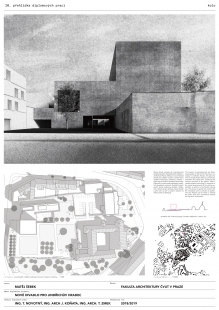
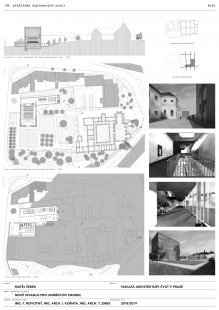
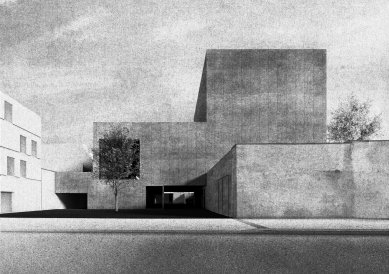
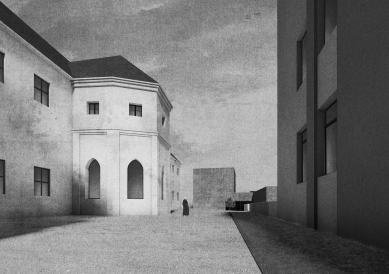
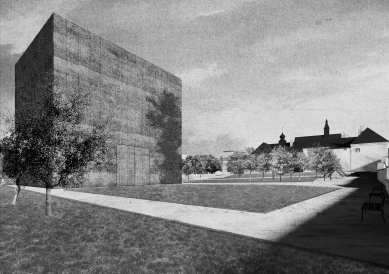
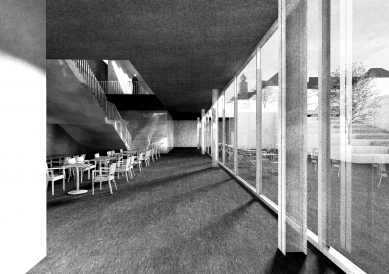
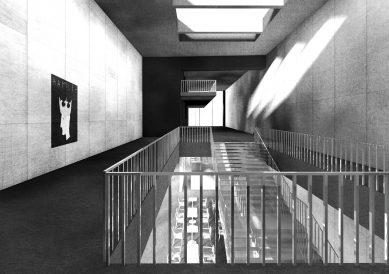
0 comments
add comment
Related articles
0
12.10.2019 | Diplomas 2019 - 2nd place
0
12.10.2019 | Theses 2019 - 3rd place
0
12.10.2019 | Theses 2019 - honorable mention
0
12.10.2019 | Theses 2019 - Special Award from Zumtobel
0
12.10.2019 | Diplomas 2019 - Special Award from Heluz Company
0
12.10.2019 | Theses 2019 - Special Award from the Cegra Company
0
12.10.2019 | Theses 2019 - Price of Czech Centers
0
08.10.2019 | The winner of the Diploma Thesis Exhibition 2019 is Matěj Šebek from CTU










